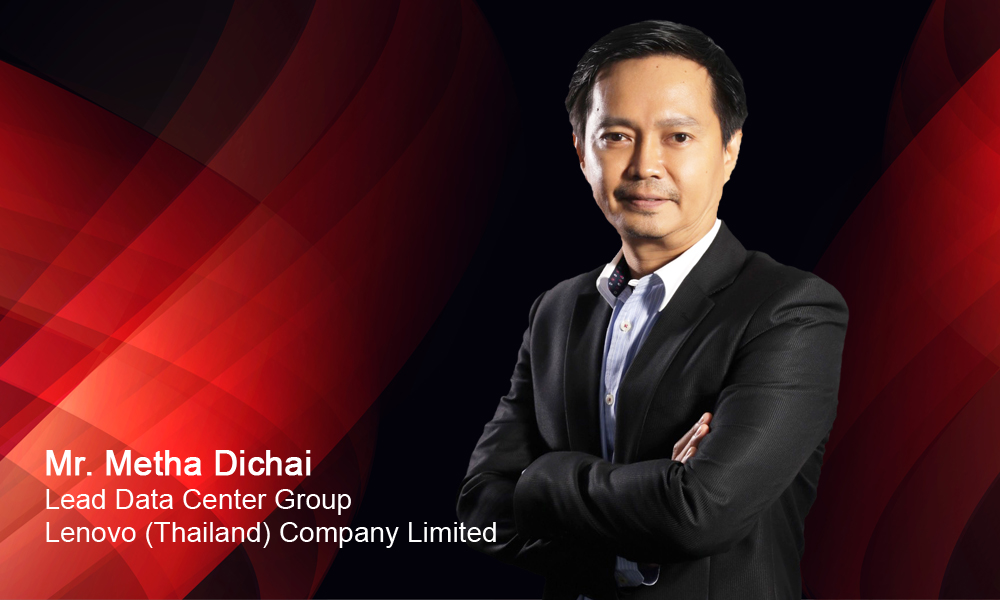Hyper Converged, The Technology that Meets the Modern Business Needs
Undeniably, business organizations in the modern world require up-to-date technological system. Systems and equipment such as network, server, and storage must unavoidably be involved.

Mr. Metha Dichai, Lead Data Center Group of Lenovo (Thailand) Company Limited said that the server previously used in the organization was a single-server system which we could purchase hardware, install OS, and install the desired applications. Whether it was mail server or storage system, there were no problems if the organization was neither too large nor too small with not many complications.
As time went by when the business scale became larger that the server must be expanded, continual increase of scale may sound easy. However, the difficulty was transferring data from the old to the new system. We had to sit tight and see if the old applications were compatible with the new system or not. This matter previously caused problems for the organizations. Accordingly, we have invented Hyper Converged Infrastructure or HCI to help solving the problems.
HCI contained SDI or Software-Defined Infrastructure that combined all servers to work in harmony as a single server. It brought out the performance of all servers and offered flexibility for server expansion. Moreover, there were no worries on system failure because every server in the network could work interchangeably at all time.
Lenovo had designed HCI system according to the customer demand which was called ThinkAgile. It divided the solutions into 3 types. Lenovo proceeded the development together with our partners such as ThinkAgile HX jointly developed with Nutanix, ThinkAgile VX Series jointly developed with Vmware, and ThinkAgile MX jointly developed with Microsoft.
The strong point of HCI was lower overall costs. In the past, when the server storage system was to be made whether NAS, DAS, and SAN, it must rely on the expensive storage administrator. On the contrary, Hyper Converged used the software to connect each storage together resulting in cheaper costs.
Mr. Dichai told us further that Lenovo was a hardware service provider that allowed the customers to build their own HCI system. For example, Thinksystem of which the strength was efficiency with Benchmark Awards from the global central agency was one of the very first HCIs that received support from SAP Solution. If the customers chose Lenovo hardware, they could be confident in the performance and value.
Customer Group Suitable for HCI
Mr. Dichai said that HCI was suitable for every business organization depending on how it would be applied for use. For example, Lenovo customer used it for software testing or applied to Remote Office as its user interface was easier to use than Traditional Server.
Recommendations for Organizations Beginning to Use HCI
Mr. Dichai recommended that it was important that the organization must first acknowledge in which aspect HCI would be used to maximize the benefits. Also, the IT department must study to what extent HCI system would be compatible to the original system.
Lenovo would listen to the customer’s problems and give some advice. When the customer decided to make an investment, POC or Proof Of Concept shall be made for the customer which referred to the program or computer system testing to examine if the system or program was working properly or not.
Additionally, the last advice from Mr. Dichai was that HCI was currently a very strong trend. If anyone would like to invest in new server system, HCI would cater your needs as it could support long-term usage, had lower overall costs, and reduced the system incompatibility problems to a great extent.
To step forward in the world of technology, Lenovo and Ricoh shared common goals in preparing the customer’s organizations to excel in the rapidly changing world and increasing the performance efficiency in the customer’s organizations.
